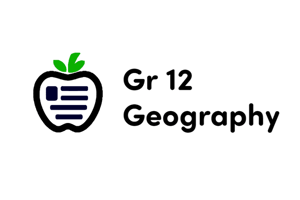Podcast
Questions and Answers
What is the primary purpose of a political map?
What is the primary purpose of a political map?
- To provide thematic data such as population density.
- To represent terrain relief with contour lines.
- To highlight boundaries, states, countries, and major cities. (correct)
- To show natural features like mountains and rivers.
Which navigational tool is primarily used to measure altitude?
Which navigational tool is primarily used to measure altitude?
- Compass
- Altimeter (correct)
- Map ruler
- GPS
In GIS, what is the primary function of data analysis?
In GIS, what is the primary function of data analysis?
- To produce political maps with boundaries.
- To create physical maps of different terrains.
- To gather and manage spatial data only.
- To visualize and analyze geographical patterns and relationships. (correct)
Which type of map is used to indicate population density?
Which type of map is used to indicate population density?
What do contour lines on a topographic map represent?
What do contour lines on a topographic map represent?
Which cardinal direction is directly opposite to East?
Which cardinal direction is directly opposite to East?
What is the role of a compass in navigation?
What is the role of a compass in navigation?
Which of the following best describes a road map?
Which of the following best describes a road map?
Flashcards are hidden until you start studying
Study Notes
Map Reading Skills
- Orientation: Understand cardinal directions (N, S, E, W) and intermediate directions (NE, NW, SE, SW).
- Legend/Key: Interpret symbols and colors used on maps for features like roads, rivers, and landmarks.
- Scale: Grasp the relationship between distance on the map and actual distance; scales can be linear or ratio.
- Latitude and Longitude: Use grid coordinates to locate specific points on a map.
- Topographic Lines: Analyze contour lines to understand elevation and terrain shape.
Types of Maps
- Physical Maps: Show natural features (mountains, rivers, lakes) and elevation.
- Political Maps: Highlight boundaries, states, countries, and major cities.
- Thematic Maps: Focus on specific themes like population density, climate, or economic data.
- Topographic Maps: Represent terrain relief and landforms through contour lines and elevations.
- Road Maps: Provide information for navigation including streets, highways, and points of interest.
Navigational Tools
- Compass: A device that shows direction relative to the Earth's magnetic poles; essential for orienting maps.
- GPS (Global Positioning System): Satellite-based system for determining precise locations on Earth.
- Smartphone Navigation Apps: Integrate GPS data with mapping software for real-time navigation and directions.
- Map Ruler: Used to measure distances on maps accurately.
- Altimeter: Measures altitude or elevation above a fixed level, often used in hiking and aviation.
Geographical Information Systems (GIS)
- Definition: A framework for gathering, managing, and analyzing spatial and geographic data.
- Components: Hardware (computers), software (GIS applications), data, procedures, and people.
- Applications: Urban planning, environmental management, transportation, disaster response, and resource management.
- Data Analysis: Allows users to visualize and analyze geographical patterns and relationships.
- Layering: Multiple data layers can be overlaid to assess various geographic factors simultaneously.
Cartography Basics
- Definition: The art and science of map-making.
- Design Principles: Consider balance, contrast, hierarchy, and clarity in map presentation.
- Projection Types: Understand different map projections (e.g., Mercator, Robinson) and their implications on area, shape, distance, and direction.
- Data Sources: Maps can be created from satellite imagery, aerial photography, or ground surveys.
- Digital Cartography: Utilizes software tools for creating and sharing interactive maps online.
Map Reading Skills
- Orientation: Important to recognize cardinal (N, S, E, W) and intermediate directions (NE, NW, SE, SW) for navigation.
- Legend/Key: Essential for decoding symbols and color schemes indicating roads, rivers, and landmarks on maps.
- Scale: Critical to comprehend the relationship between map measurements and real-world distances; scales can take the form of linear or ratio representations.
- Latitude and Longitude: Utilize grid coordinates to pinpoint exact locations on a map for accurate navigation.
- Topographic Lines: Analyze contour lines to gauge elevation changes and the configuration of the land.
Types of Maps
- Physical Maps: Represent natural geographic features including mountains, rivers, and elevation variations.
- Political Maps: Illustrate borders, countries, states, and significant urban centers.
- Thematic Maps: Concentrate on specific topics such as population density, climate trends, or economic indicators.
- Topographic Maps: Display terrain relief using contour lines to depict variations in landforms and elevations.
- Road Maps: Provide detailed navigation information including streets, highways, and important landmarks.
Navigational Tools
- Compass: Instrument that indicates direction based on the Earth's magnetic field, vital for orienting maps accurately.
- GPS (Global Positioning System): A satellite-driven system that enables users to determine their precise location on Earth.
- Smartphone Navigation Apps: Combine GPS functionality with mapping interfaces for real-time navigation assistance.
- Map Ruler: Tool designed for accurately measuring distances between points on a map.
- Altimeter: Device used to measure elevation above a specific reference point, useful in hiking and aviation contexts.
Geographical Information Systems (GIS)
- Definition: A comprehensive framework for the collection, management, and analysis of spatial and geographic data.
- Components: Includes hardware (e.g., computers), software applications, data sets, procedures, and skilled personnel.
- Applications: Widely used in fields such as urban planning, environmental management, transportation optimization, disaster preparedness, and resource allocation.
- Data Analysis: Facilitates visualization and examination of geographical trends and interrelationships.
- Layering: The capability to overlay multiple data layers enables simultaneous assessment of various geographic variables.
Cartography Basics
- Definition: Combines artistry and science in the discipline of map-making.
- Design Principles: Successful map-making requires attention to balance, contrast, hierarchy, and overall clarity for effective communication.
- Projection Types: Familiarity with various map projections (e.g., Mercator, Robinson) is crucial for understanding their effects on area, shape, distance, and direction.
- Data Sources: Map construction can be informed by satellite imagery, aerial photography, or on-the-ground surveys.
- Digital Cartography: Leverages software tools to create and disseminate interactive maps via online platforms.
Studying That Suits You
Use AI to generate personalized quizzes and flashcards to suit your learning preferences.




